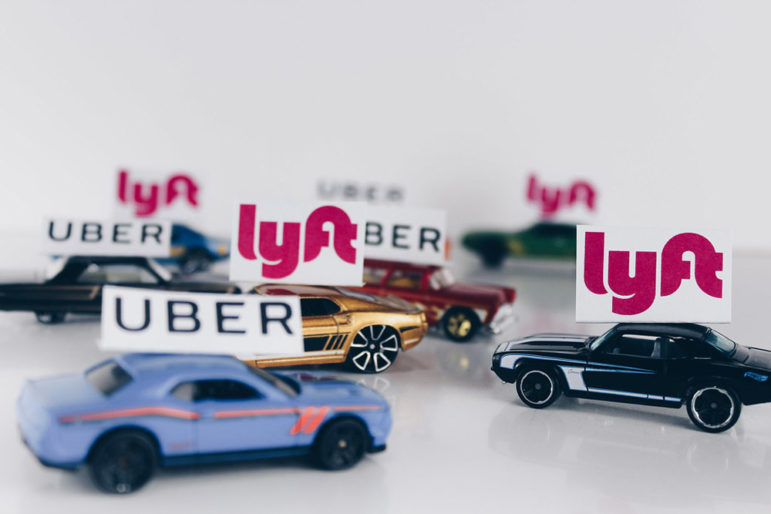
May 9, 2019; New York Times, Slate, and Corporate Counsel
Last week, Uber raised $8.1 billion in additional capital in its initial public offering (IPO), while the company (along with Lyft and Juno) faced their first global labor action. Of interest to NPQ readers is that, together, the IPO and the labor action provide a stark illustration of the wealth and income gaps that are ever-present in today’s winner-take-all economy, which has led to our nation’s ongoing second Gilded Age.
The stock holdings of Travis Kalanick, co-founder and former CEO of Uber, are now worth an estimated $5.3 billion. Kalanick, as NPQ readers may recall, was forced out as CEO two years ago for fostering a hostile work environment in which sexual harassment was rampant, but he has not suffered financially. (Nor has Uber suffered, even though Uber is still losing money at an astonishing clip—losing over $1 billion on $3 billion in revenue in the first quarter of 2019.)
Meanwhile, Uber drivers suffer from a business model that defines them as “independent contractors” rather than employees, meaning that health insurance and business costs are offloaded onto the drivers themselves. A 2018 survey estimated that the average effective wage of Uber drivers, after expenses and including tips, works out to only $14.73 an hour—about $30,000 a year per driver, if full time. In other words, Kalanick’s stock holdings are the equivalent of the annual earnings of over 176,000 full-time drivers.
Another impact of the independent contractor model, notes April Glaser in Slate, is that compensation is unstable. Glaser reports, “At a protest in front of Uber’s Market Street headquarters in San Francisco, a driver named Vinnie told me that when he started driving for Uber in 2013, he was paid about $2.20 a mile. Now, he says, he gets about 92 cents a mile. At most jobs, he lamented, you’d think that you’d be making more after six years, not less.”
The inequalities would’ve been even greater, note Michael J. de la Merced and Kate Conger in the New York Times, had Uber’s initial public offering (IPO) been as “lofty [as] expected.” Still, even at a lower-than-expected $45 a share, the company’s valuation is now $82.4 billion, a number that has only been exceeded twice by IPOs in the tech world: once by the Chinese e-commerce company Alibaba in 2014 ($168 billion) and the other time by Facebook in 2012, which was valued at $104 billion when it first was publicly listed on the stock exchange.
It is too early to assess the impact of the first prominent global labor action against the ride-hailing companies. Hard data on the ride-hailing work stoppage are not available. In San Francisco, Glaser reports that as many 300 drivers showed up at a Market Street protest—a sizable number, but a small percentage of drivers. (If the city’s district attorney is to believed, as many as 45,000 people drive for Uber and Lyft in San Francisco.)
Sign up for our free newsletters
Subscribe to NPQ's newsletters to have our top stories delivered directly to your inbox.
By signing up, you agree to our privacy policy and terms of use, and to receive messages from NPQ and our partners.
Still, such comparisons understate the impact of the labor action. As Glaser explains:
Wednesday’s strike may have seemed like the culmination of years of driver unrest, but it could prove to be a beginning. Organizing independent contractors who don’t have an easy way to meet each other isn’t easy. Many drivers probably weren’t even aware of the protest, while others likely couldn’t afford to stop working… Buzzing around the crowd, drivers with clipboards walked around taking down first-time protester-drivers’ email addresses and phone numbers to invite them to future meetings.
As Veena Dubal of Slate observes, the global action highlights the emergence of a new labor organizing model, developed by such grassroots groups like L.A. Rideshare Drivers United, the New York Taxi Workers Alliance, and Gig Workers Rising—all of whom have “engaged in years of independent, on-the ground organizing with almost no funding but a lot of energy.”
Public policy will be critical here. For example, will Uber and other ride-hailing services be able to continue to maintain the status of drivers as independent contractors? This is looking ever less likely as labor organizing increases and politicians begin to take notice.
According to Corporate Counsel, in a US Securities and Exchange Commission (SEC) filing, Uber “set aside $146 million to $170 million for settlement payouts” for arbitration cases regarding employee classification. Corporate Counsel also reports that Uber listed classifying drivers as employees as a “risk factor” to the SEC, acknowledging last year’s Dynamex state supreme court decision in California regarding the gig economy as a case that “could require classification of Drivers as employees.”
What comes next? It is hard to say, but whether through labor organizing, driver-owned cooperative ride-hailing services, or some combination of both, the current ride-hailing service business model is in desperate need of change.—Steve Dubb











